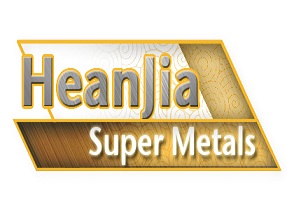You are here: home > Alloys House > Role played by Titanium in US defense history
Product (738)
- Pure Nickel Products (38)
- Incoloy Products (74)
- Inconel Products (72)
-
FeCrAl Product
(99)

-
Nichrome Products
(68)

- Monel Products (36)
- Hastelloy Products (49)
- Nickel Iron Alloy Product (59)
-
Nickel Copper alloys
(47)

- Nonferrous Metal Product (27)
-
Resistance Wire
(90)

- Stainless Steel Product (42)
- Mesh Demister (20)
- Others (17)
Product Forms (14)
Quality Certificate (11)
Learning Gallery (30)
Incoloy News (9)
Inconel News (22)
Molybdenum News (7)
Nikrothal News (4)
Nichrome News (13)
Titanium News (2)
Nickel News (8)
Alloys House (30)
Tools (27)
Nickel alloy News (30)
Latest Buzz (30)
nickel chrome copper iron alloys news (28)
Credit Report
Products Index
Company Info
Heanjia Super-metals Co., Ltd. [China (Mainland)]
Business Type:Manufacturer, Trading Company
City: Beijing
Province/State: Beijing
Country/Region: China (Mainland)
Alloys House
Role played by Titanium in US defense history
Pure titanium was prepared in very less amount before the invention of iodide by Anton Eduard van arkel and Jan Hendrik de Boer in 1925 using the reaction in which titanium treated with iodine and decayed to prepare vapors over a hot filament to pure metal. Soviet Union pioneered the utilization of titanium in army as well as under water uses like Alfa class and mike class which are the part of programs linked with cold war in 1950s and 1960s. In the beginning of 1950s titanium was widely utilized for army aviation reasons, mainly titanium wire in the uses of jets, beginning with airplane like F100 Super Sabre and Lockheed A-12.
After that the department of defense in USA, the understood the intentional significance of titanium and supported the starting hard works of industrialization. During the time of cold war, U.S. government called titanium an intentional metal and in a huge quantity of titanium sponge was stored by the defense national stockpile centre, at last which was exhausted in the 2000s. According to 2006 reports, Russian depended VSMPO-Avisma world's highest manufacturer was expected to store about 29% of the world market share. While in 2009, titanium sponge was prepared by six countries: china, Japan, Russia, Kazakhstan, USA and Ukraine.
After that the department of defense in USA, the understood the intentional significance of titanium and supported the starting hard works of industrialization. During the time of cold war, U.S. government called titanium an intentional metal and in a huge quantity of titanium sponge was stored by the defense national stockpile centre, at last which was exhausted in the 2000s. According to 2006 reports, Russian depended VSMPO-Avisma world's highest manufacturer was expected to store about 29% of the world market share. While in 2009, titanium sponge was prepared by six countries: china, Japan, Russia, Kazakhstan, USA and Ukraine.
A two-company association was rewarded with$5.7 million due to extending a new procedure for preparing titanium metal crush in 2006 by the U.S. defense organization. This crush can be utilized in the presence of heat and pressure to form tough, lightweight matters varying from protective covering platting to substances for aerospace, transfer and chemical dealing industries.
The dispensation of titanium metal involves 4 main moves that are: reducing titanium ore in sponge which is a porous type, melting of either sponge, or sponge plus which is a main alloy that prepares an ingot, first production in which this ingot is turned into usual mills goods like billet, bar, plate, sheet, strip and pipe, and then second production of resulted shapes from mill goods.
Titanium metal cannot be prepared by reduction of dioxides due to the reason that this metal treats with oxygen at very high temperature. Hence titanium metal is prepared industrially by the Kroll process which is a complicated and costly batch reaction. In this process chloride is prepared from oxide through carbochlorination, on the other hand chlorine gas is passed over extremely hot rutile or ilmenite in the environment of carbon to prepare TiCl4. Then the product is condensed and distilled by fractional distillation and after that it is reduced with 800°C melted magnesium in the presence of argon. The cost of titanium in market is very high because of its processing; due to this a additional costly metal magnesium has to be given up.
A newly invented method is the FFC Cambridge process that can ultimately substitute the Kroll process. In this process titanium dioxide crush that is developed from rutile is utilized like a feedstock to prepare the final creation can either be a crush or sponge. The final creation will be an alloy manufactured of a very less price than the conventional multi-step melting reaction, if the mixed oxide crushes are utilized. The FFC Cambridge method can provide titanium wire a less rare and a costly substance meant for aerospace manufacturing and comfort materials market that can be shown in various substances that are freshly prepared by utilizing aluminum and expert grades of steel.
Pre Page:
Utilization of titanium alloys in army...
Next Page:
Chemical Composition of different Nickel...
.gif)


